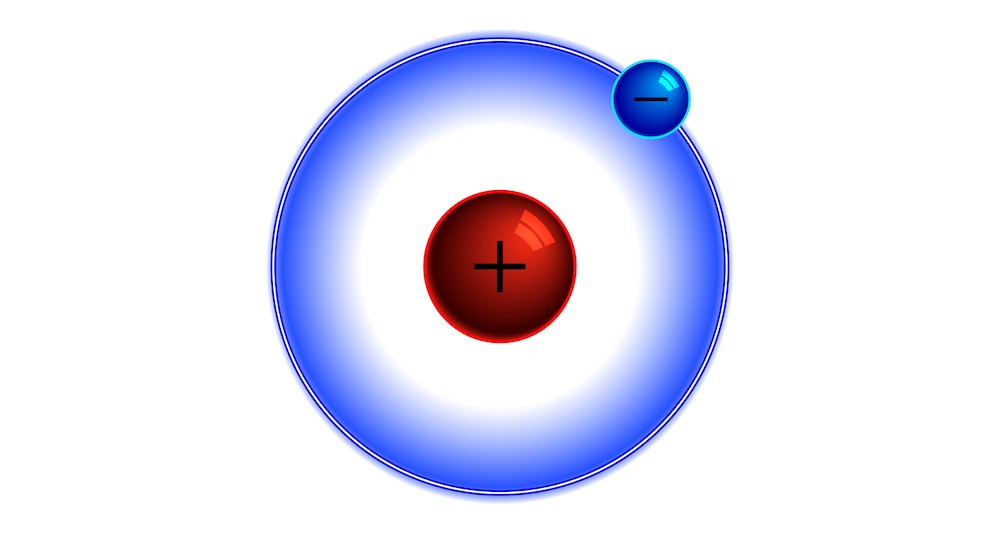Create a free profile to get unlimited access to exclusive videos, sweepstakes, and more!
Protons are 5% smaller than previously thought
That's actually a pretty big deal for a small particle.

Look around you (or, if you’re sight impaired, touch something). Everything solid, liquid, or gas that you see and feel is made of matter. We sometimes call it “normal” matter, though with dark matter outmassing it 6-to-1 in the Universe which of them is normal?
Anyway, normal matter is overwhelmingly made of three things: Electrons, protons, and neutrons. These are subatomic particles so small that our concept of size is difficult to pin down. At those sizes quantum mechanics rules the day, and a lot of things we think of as fixed and measurable, like speed, size, and location, are not at all pin-downable. In fact, the more we know about one characteristic of a subatomic particle the less we know about another; Heisenberg’s Uncertainty Principle is a pretty well known if baffling QM driving idea.
Worse, protons and neutrons are actually made of three smaller particles called quarks, each connected by a very strong force — called the strong force — holding them together. So talking about the size of the proton is dicey.
But it can be a useful concept in physics, as well as just when we imagine these particles as being weird little balls that make up the normal matter in the Universe. We know they don’t have zero size, and they’re clearly not, say, a meter across. So how big are they?
Up until very recently, experiments conducted to find the size of a proton found them to be about 1.76 femtometers in diameter — 1.76 quadrillionths of a meter, or 0.00000000000000176 meters. Very, very wee indeed.
But then in 2010 some physicists did a clever experiment that was much more accurate.
The method involved binding a muon — a negatively charged particle like an electron but 200 times more massive — to a proton, making a weird kind of heavy simulacrum of a hydrogen atom called a muonic atom, and measuring precisely how much energy it took to move the muon. This depends on the proton’s size, and what they found is that the proton was smaller than expected, about 1.68 femtometers. That may not seem like much, but a 5% difference is like a galaxy to a particle physicist. A big deal. Huge. A follow-up experiment done in a similar way with an electron instead of a muon verified the result.
The QM world was thrown into a period of head scratching (that’s how theoretical physicists express chaotic mental turmoil). Could the older experiments be wrong, or the new ones, or is there new physics involved? The last bit would be very exciting because it would mean our understanding is incomplete, and that means more cool stuff is out there to figure out. That’s a scientist’s dream. Alas, that is not to be, but the answer is still very interesting.
Recently, a different team of physicists tried an entirely different way to measure the size of a proton. They looked at previously taken data from shooting beams of electrons at protons [link to paper]. In general the path of the electron is bent by the proton like a magnet pulling on a ball bearing rolling past it. But given a high enough energy and aimed right at the proton, the electrons bounce off of protons, a process called scattering. The electrons have to get close enough to the proton to scatter off it like two billiard balls colliding, and that means carefully measuring the way the electrons interact can yield the size of the proton.
They used a new theoretical basis to reanalyze these older results. What did they find? Protons are 1.68 femtometers across.
AHA! Note that this is a completely different way to measure the proton size, independent of the proton+electron/muon measurements. Yet they agree.
So it seems the proton really is smaller than we thought. This doesn’t change how your computer works or things like the size of the Sun or anything like that, but it does mean our understanding of how those things work on the supersubmicroscopic level is now a little bit better.
For example, the Sun is powered by fusing hydrogen nuclei — really, protons — together. There are a lot of steps to it, but in the end four protons plus some other particles get squished together to form a helium nucleus, made of two protons and two neutrons. This releases energy, and that powers the entire freaking Sun (well, 99% of it). That fusion depends in some ways on the size of the protons, so knowing it better means we can understand that process better. That’s cool.
But it also underscores something I talk about a lot, and that’s that while we do understand a lot about how the Universe works, we don’t understand everything, and sometimes that includes things you might think are basic. In many cases we know them well enough to make a lot of physics work, but in those cases it’s always nice when we get to know that thing better. And that now includes the size of the proton.


























